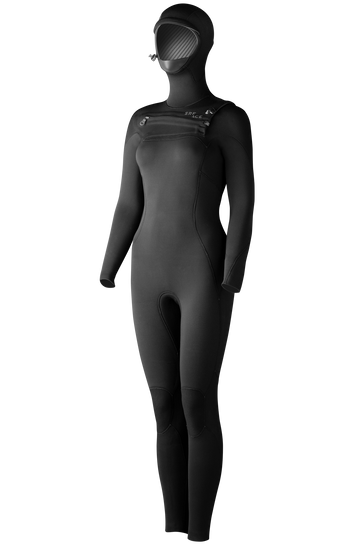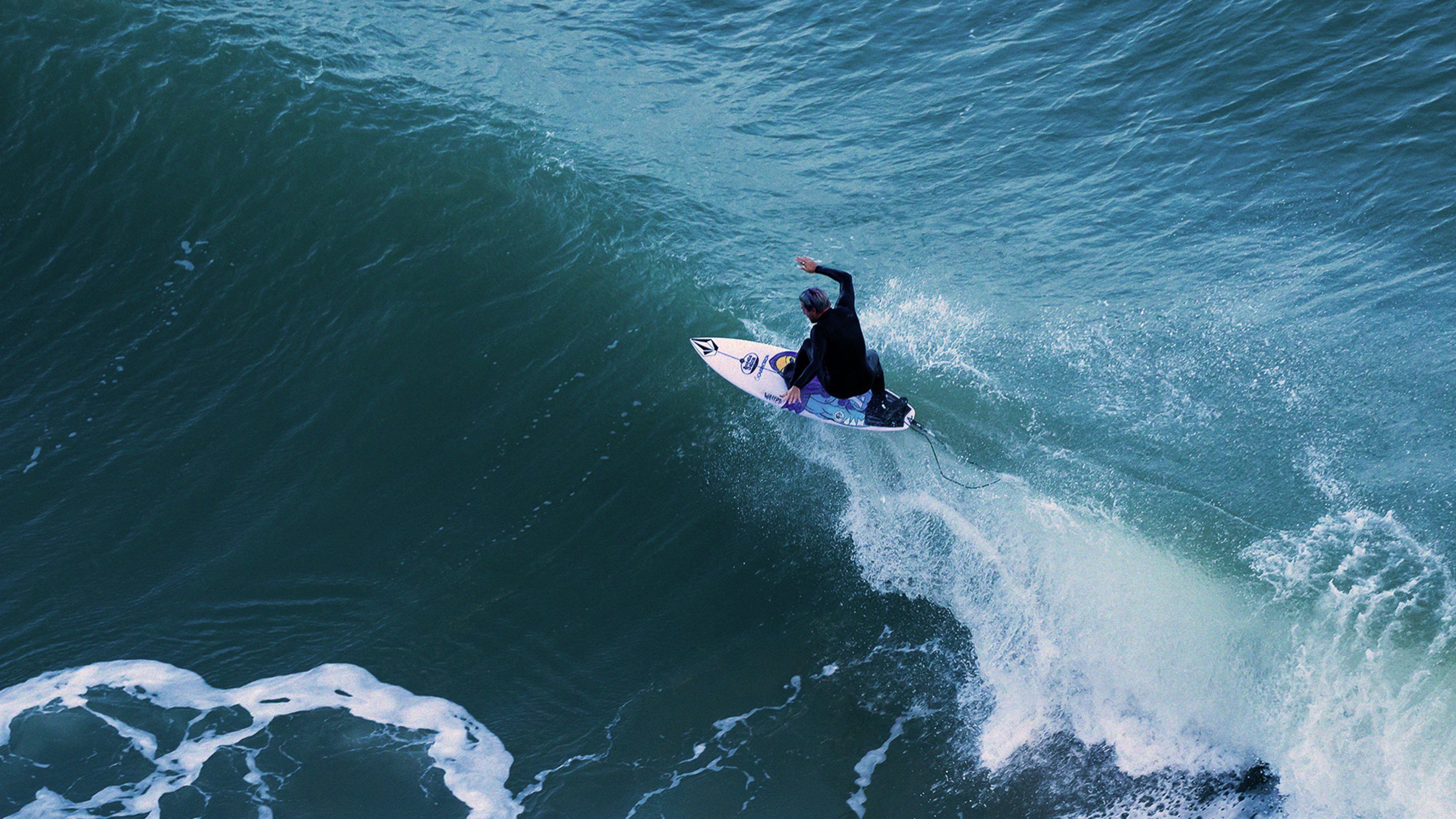
WHY USE HOODED WETSUITS?
Hooded wetsuits are a winter essential for any surfer that wants to maximize time spent in the water all winter long. The times of having to take a winter break because the water is too cold to surf are a thing of the past. Modern hooded wetsuits will handle cold water with ease. Make sure you get a high-end wetsuit that is flexible, warm and has the perfect fit and size to eliminate any trapped air or water pockets inside your wetsuit.
Featured wetsuits
A WARM HEAD IS A WARM BODY
When it’s cold outside you loose a lot of your body heat through the head. So keeping your head nice and warm with a hooded wetsuit is a very effective way to maintain body heat and prevent hyperthermia. Therefore, wearing a neoprene hood is a great way to stay warm during your surf session. There are wetsuits available with a built-in hood, or you can buy a separate hood to wear with any wetsuit. However, a fixed hood seals off much better, so it is worth to spend money on a dedicated winter wetsuit with a built-in hood. This way you will never be cold in winter, even on those subzero days.
HOODED WETSUIT THICKNESS
Hooded wetsuits usually come in thicker neoprene thicknesses, such as 4/3, 5/4 or 6/4mm. Read everything you need to know about wetsuit material thicknesses here. The hood itself is usually made out of single lined or double lined neoprene. The high-end versions features plush quick-dry lining on the inside combined with neotape for extra protection and rash prevention.
Choose your wetsuit
WATER TEMPERATURE VS. NEOPRENE THICKNESS
- 4/3 mm hooded wetsuit: water temperatures around 10~15°C
- 5/4 mm hooded wetsuit: water temperatures around 4~10°C
- 6/4 mm and thicker hooded wetsuit: water temperatures below 2~8°C
You can wear your 4/3 mm hooded wetsuit from September until December, but also during spring in most of western Europe. While a 5/4 mm wetsuit with a built-in hood would be the best option for most surfers in western Europe from October until April. Consider our 5/4 mm hooded wetsuit for the middle of winter in northern European countries such as Norway and Denmark. Check out our wetsuit thickness finder to find the perfect thickness for you.
SINGLE LINED VS. DOUBLE LINED CHEST AND BACK PANELS
Single lined neoprenes, such as smoothskin or mesh, are the more rubbery looking neoprene types. They work especially well in extremely cold or windy conditions when used on chest and back panels. These panels are smooth and water repellant. Therefore, the plush lining stays dry and doesn’t absorb any water. This eliminates windchill and prevents your core from cooling down. Chest and back panels often have a plush insulated inside layer to keep you even warmer. We heat-seal our single lined neoprene to make the surface silky smooth and waterproof. However, there is a disadvantage of single lined neoprene: Damage is easily done to this type of material. Therefore, it’s essential to take extra care when putting on and taking off your wetsuit. For example, make sure you prevent your fingernails from scratching the single lined panels to enjoy the wetsuit as long as possible.
DOUBLE LINED NEOPRENE
We make most panels, other than chest and back, with double lined neoprene. This neoprene type has knitted nylon or polyester jersey laminated onto the surface of the neoprene inside and outside panels. Double lined neoprene holds water in the lining. Therefore, it’s prone to cool down faster, especially when the wind chill factor is high. However, double lined neoprene is often more durable and slightly more flexible than single lined neoprene. It’s most suitable to use on panels that need more flexibility. Panels that need extra protection from damage benefit from double lined neoprene. Particularly arms, legs, shoulders and knees. Single lined chest and back panels are essential in a winter wetsuit for extra warmth, insulation, and reduced windchill.

PLUSH INSULATION QUICK-DRY LINING
Plush insulation inside lining with quick-dry function is a must for any cold water winter wetsuit. Most modern high-end wetsuits use some form of plush lining. Plush or quick-dry describes the fleece inside lining of some neoprene wetsuit panels. The hollow nylon fibers in the lining trap air bubbles, which creates a layer of insulating air between your body and the neoprene. Quick-dry means the material dries quicker than the normal inside lining. When wearing it, it feels comfortable, warm and dry on the skin by channelling the water to the back of the fabric, so it can run down the wetsuit, away from the skin. The lining helps with drying your wetsuit quicker between sessions. The main areas where we use plush inside lining are body panels that require extra warmth but don’t necessarily require maximum flexibility.
LIQUID SEALED SEAMS
A hooded wetsuit benefits from liquid sealed outside seams. Reinforced liquid neoprene sealed seams are a step up from traditional glued and blind stitched seams. This durable seal is applied on top of the stitching to create sealed outside seams, mainly used in high-end wetsuits. It functions as an extra layer of protection from water entering the wetsuit. Sealed seams make a wetsuit last longer compared to a normal GBS wetsuit. The technical name for this seam construction is S-seal. S-seal is similar to Powerseam, a thinner, neater sealed seam. However, S-seal can take more abuse without cracking, which makes the wetsuit more durable and last longer.
TAPED INSIDE SEAMS
Neoprene taped inside seams are another way to reinforce quality wetsuit seams of your hooded wetsuit. Neotape seams make the seam even more waterproof and durable by forming an extra layer of protection against water leaks. It also protects against seam irritation to the skin. There are two types of neotape: The traditional way is to hand glue the neotape onto the seam. The new neotape version is heat welded onto the seam. We apply traditional neotape by hand with normal glue, which can leave some glue residue on the tape’s edge. Whereas when we machine apply the newer neotape neatly, we use a hotmelt glue layer. This thin Neotape 2.0 does not leave residue, which allows for better protection against skin rash.
SURFERS EAR PROTECTION
In addition to keeping you warm in extreme winter conditions, you can use a hooded wetsuit to protect you against cold wind and water to prevent surfer’s ear. This means you can wear a hooded wetsuit throughout the year. In other words, a hooded wetsuit doesn’t have to be the thickest winter wetsuit available. Instead, it could be an all-season 4/3mm hooded wetsuit.
NEOPRENE BOOTS AND GLOVES
To maximize the use of your hooded wetsuits, make sure your hands and feet stay warm. Your hands and feet often get cold first, so it’s important to buy a good set of neoprene booties and neoprene gloves. Winter booties should be between 3 and 6mm thickness and should have GBS (glued and blind stitched) seams or sealed seams. Avoid flatlock booties, as these seams will leak. When buying gloves, make sure you get the most flexible neoprene ones you can afford. There’s nothing worse than not being able to move your fingers. This will make you tired quickly and it definitely doesn’t help your paddling and duck diving. Make sure the wrist seals well and is long enough to overlap your wetsuit sleeves by a few centimetres. Always wear your wetsuit over your boots and gloves to prevent water flushing in from your wetsuit into your boots and gloves.

Ready to surf?
Shop from €159

















